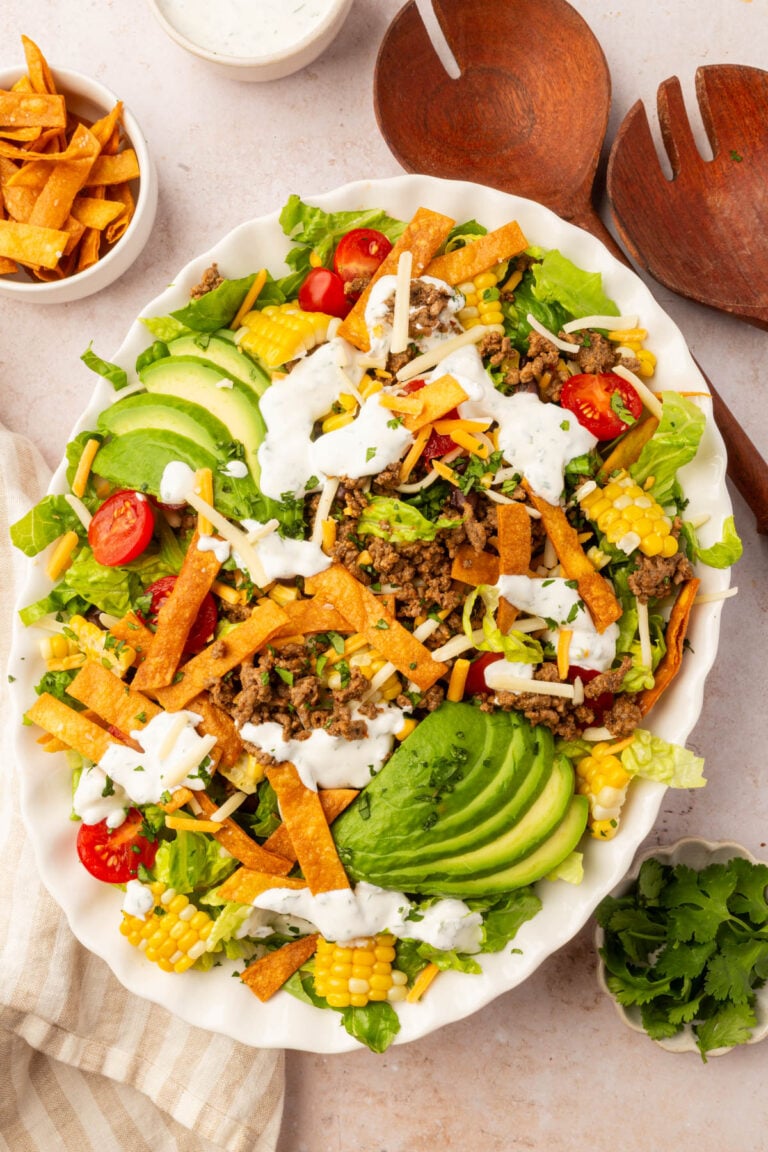
There’s nothing quite like the silky base of a perfectly made roux. Whether you’re whisking up a creamy mac and cheese, cozy broccoli cheddar soup, or hearty chicken pot pie, a good roux is where all that luscious thickness begins.
If you’ve ever tried to make a traditional roux with gluten-free flour and ended up with a gummy or gritty mess, don’t worry — I’ve been there. After a lot of testing, I’ve found the perfect balance for a smooth, flavorful gluten-free roux that works in every sauce, soup, and casserole.
Why You’ll Love this Recipe
Ingredients
TIP
Gluten-free flours are lighter and more absorbent than wheat flour. A little extra butter is the secret to a silky, easy-to-whisk roux.
Ingredient Notes
- Butter: I use unsalted butter so I can control the salt level in my final dish.
- Gluten-Free Flour Blend: I use a gluten-free all-purpose flour blend that contains xanthan gum, like Bob’s Red Mill 1-to-1 Gluten-Free Baking Flour. If you’re using a gum-free blend, that works too. I just find that a roux made with a flour blend containing xanthan gum is really smooth, so it’s usually my preference and is what I typically have on hand in my pantry anyways.
Why I Don’t Do a 1:1 Ratio by Weight
Traditional roux recipes use equal parts butter and flour by weight, but gluten-free flour behaves differently — it’s lighter, more absorbent, and doesn’t develop gluten to help bind the fat.
If you use a 1:1 ratio by weight (for example, 54g butter and 54g flour), you’ll usually end up with a thick paste that’s hard to whisk smooth. My version — 4 tablespoons butter (56g) to 4 tablespoons gluten-free flour (36g) — works out to roughly a 1.5:1 ratio by weight, which gives the roux a silky, pourable texture instead of a dense, doughy one.
That extra bit of butter makes all the difference — it helps the gluten-free flour cook evenly, prevents gumminess, and produces a smooth base that blends beautifully into milk or stock. It’s the same method I use in recipes like my Gluten-Free Mozzarella Mac and Cheese and Gluten-Free Broccoli Cheddar Soup, and it never fails.
How to Make a Gluten-Free Roux
For the ingredient list with measurements, full instructions, printable recipe, and additional notes, please scroll down to the recipe card.
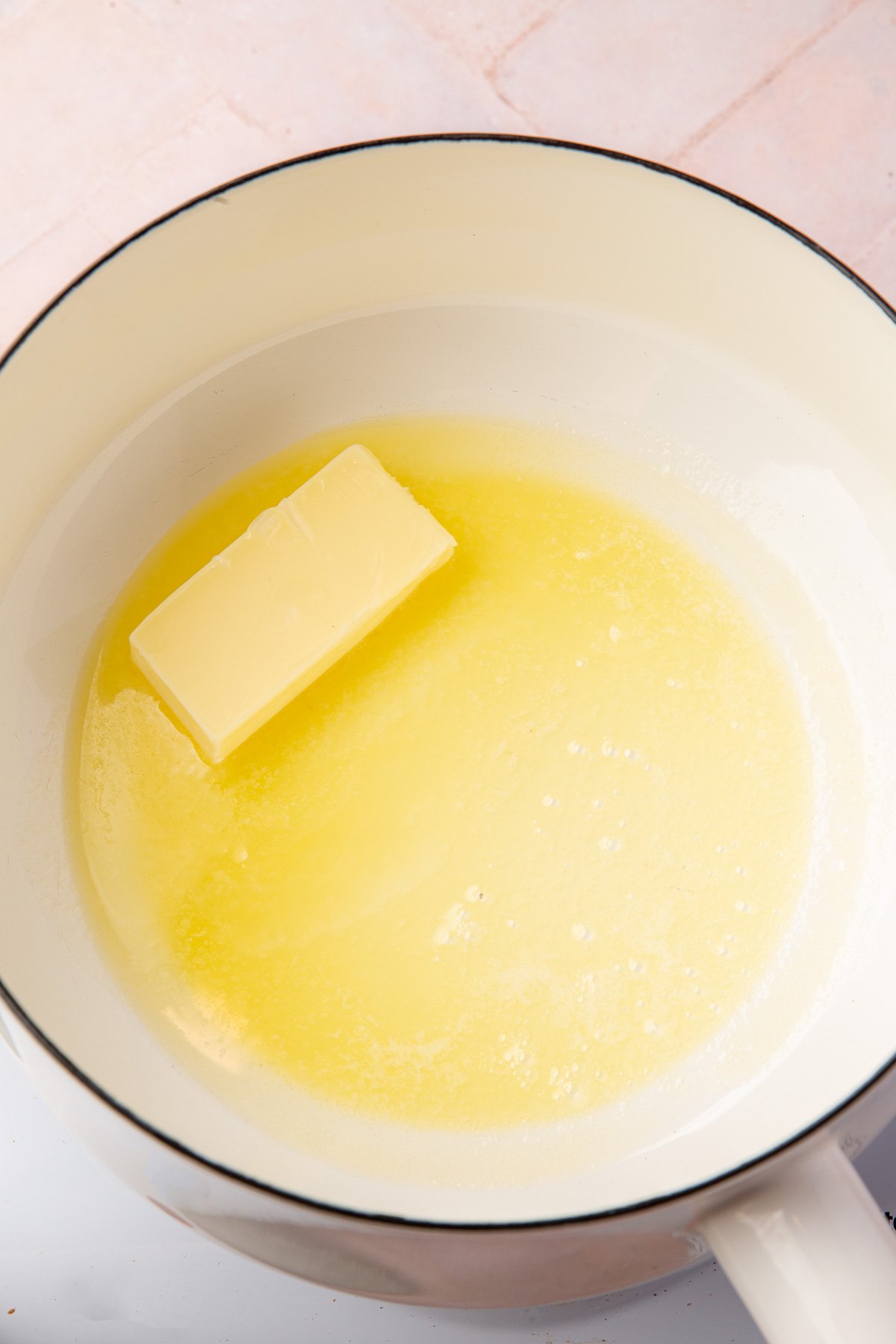
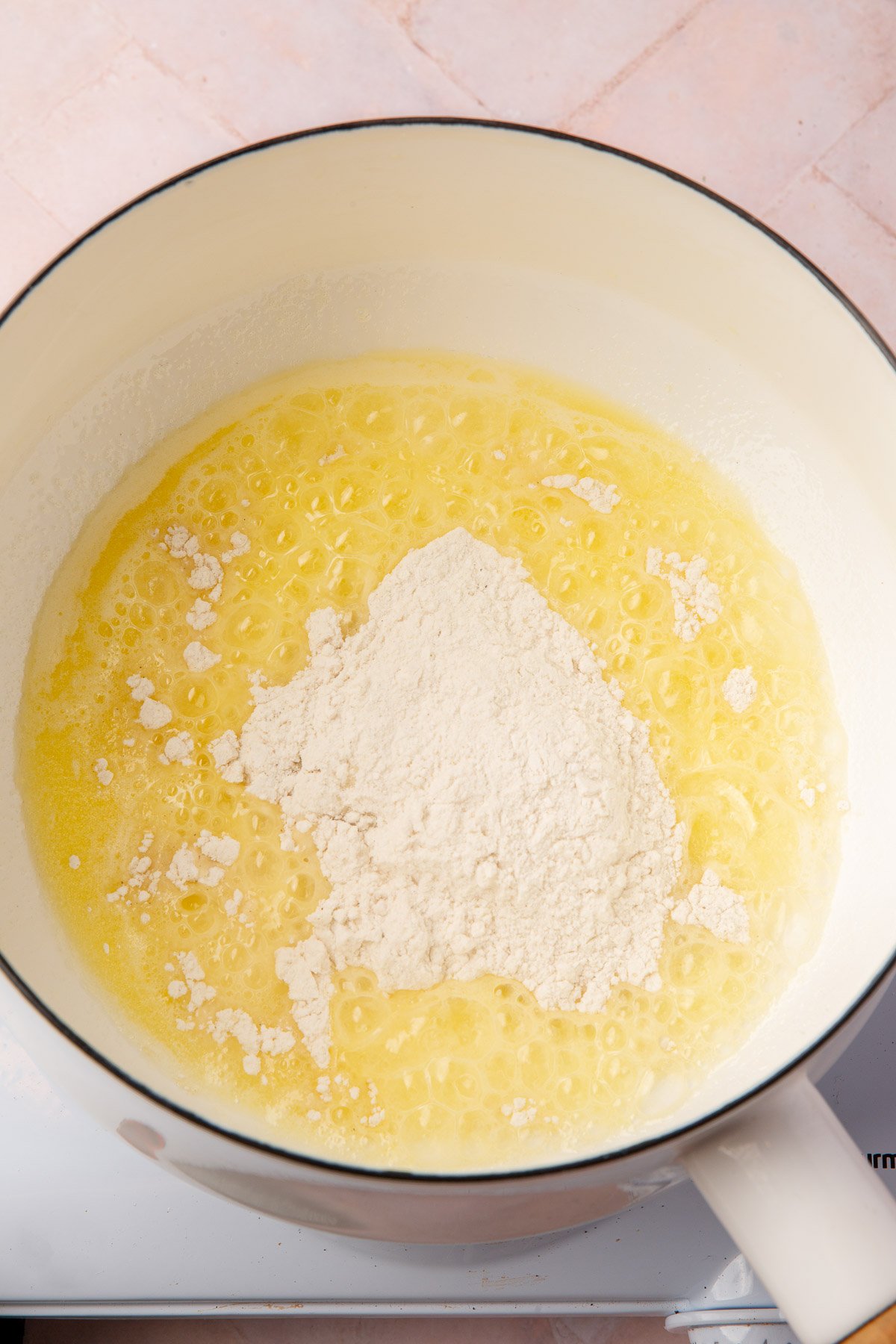

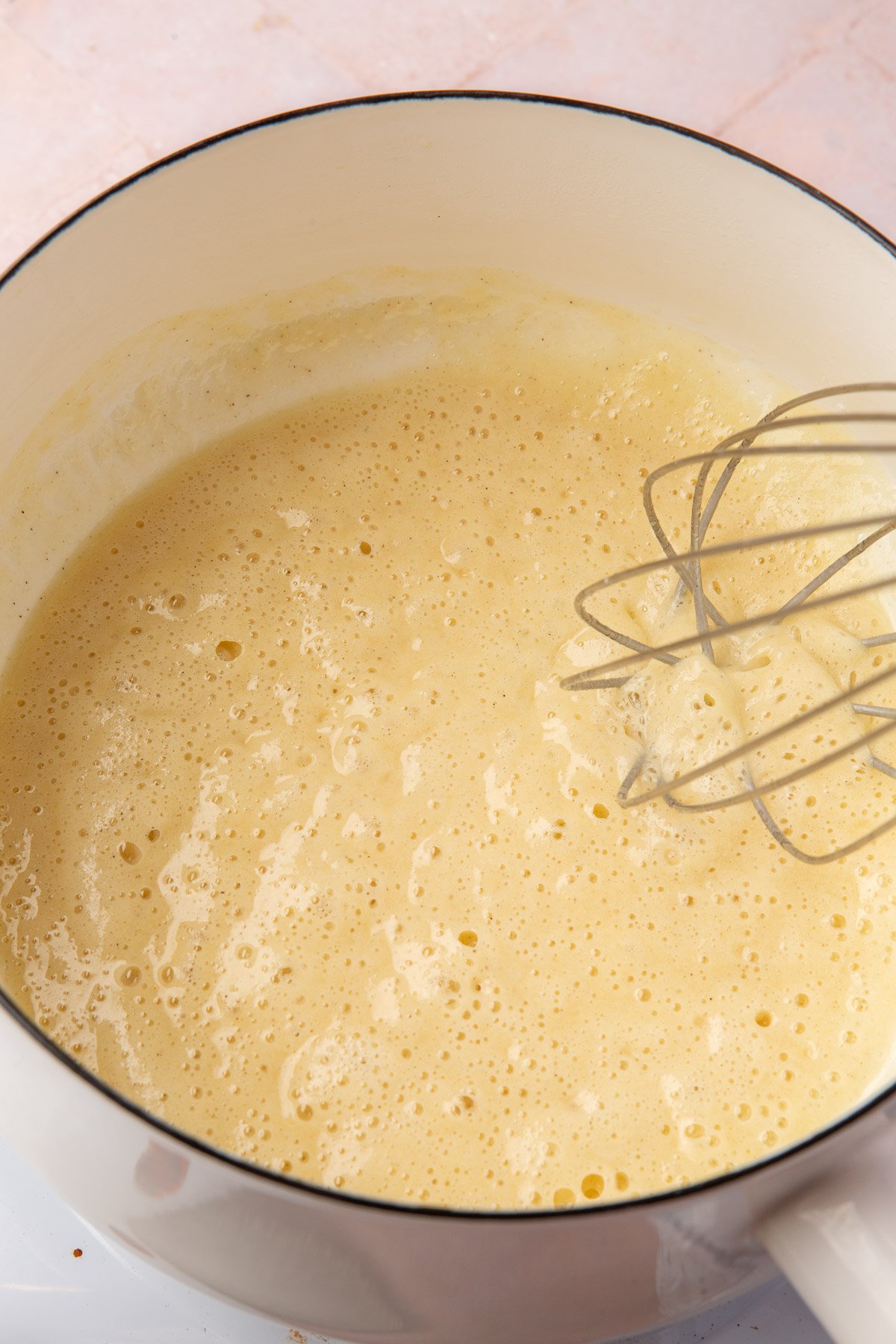
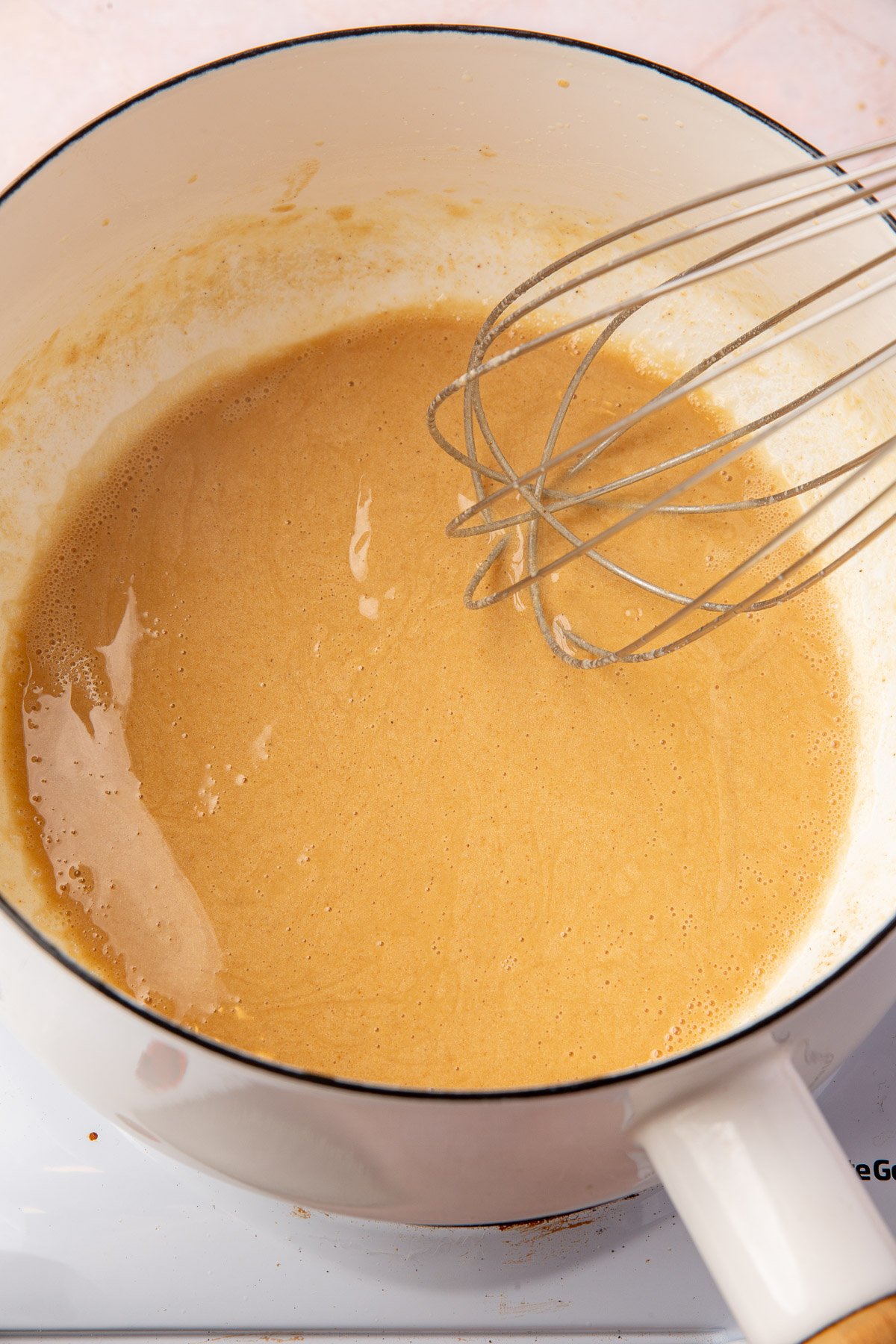
This darker roux is ideal for gravies, stews, and heartier sauces.

Understanding Types of Roux and Roux Colors
The longer you cook your roux, the darker and more flavorful it becomes, but it will also lose some of its thickening power. Here’s how to choose the right one for your recipe:
- White Roux (1-2 minutes): Cooked just until the raw flour is cooked out, it’s very pale and creamy. Best for white sauces like béchamel or cheese sauce.
- Blond Roux (3-4 minutes): Light golden with a subtle nutty flavor. Great all-purpose option for soups, gravies, and mac and cheese. (This is shown in the 4th step-by-step image above)
- Brown Roux (5-6 minutes): Rich golden-brown, with a toasted, slightly caramelized aroma. Also called the peanut butter stage. Perfect for gravies, stews, and pan sauces. (This is shown in the 5th step-by-step image above)
- Dark Roux/Chocolate Roux (over 10 minutes): Deep chocolate color, used for Cajun and Creole dishes like gumbo. It adds flavor, but little thickening.
Because gluten-free flour doesn’t contain proteins that brown the same way, your roux might not darken quite as much as a wheat-based one, but the flavor and thickening are just as good
Recipe FAQs
You can use olive oil instead of the butter. However, oil-based roux doesn’t emulsify quite as smoothly as butter-based, so it won’t have that subtle nutty richness. If you go this route, use about 3 tablespoons of oil for every 4 tablespoons of butter.
After 2-3 minutes of cooking and whisking, the roux should look glossy and smell slightly nutty — no raw flour smell. For a light (blond) roux, stop here; for a darker, more flavorful base, cook it longer until golden brown.
Yes! Store it in an airtight container in the refrigerator for up to 3 days. Reheat gently over low heat before adding your liquid, whisking to smooth it out again.
Expert Tips

More gluten-free meals to try
Did you make this recipe?
I’d love to know! Please rate it and leave a comment below. You can also share your pictures and tag @adashofmegnut on Instagram.
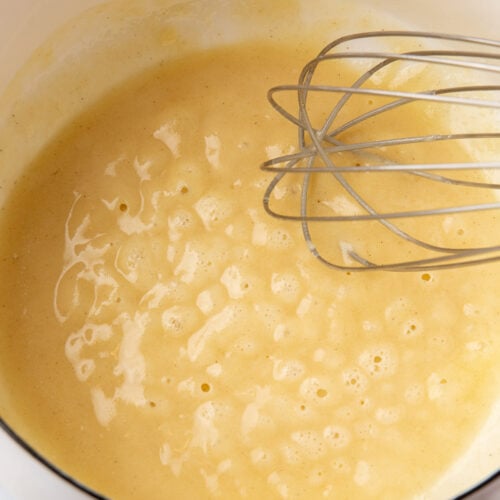
Gluten-Free Roux
Ingredients
- 4 tablespoons (56g) unsalted butter
- 4 tablespoons (36g) gluten-free flour blend - I used Bob's Red Mill 1-to-1 Gluten-Free Baking Flour
**Use the toggle button above to turn the instruction photos on and off!
Instructions
- Melt the butter: In a small or medium saucepan, melt the butter over low heat, stirring occasionally to prevent browning.
- Whisk in the flour: Gradually whisk in the gluten-free flour blend until fully combined and smooth — no lumps should remain.
- Cook the roux: Continue whisking over low heat for 2–3 minutes. The mixture will become glossy and start to smell lightly nutty.
- Choose your color: – Blond Roux (2–3 minutes): Best for creamy sauces like mac and cheese or broccoli cheddar soup. – Brown Roux (5–7 minutes): Richer flavor for gravies and stews.
- Use immediately: Slowly whisk in milk, cream, or broth to create your sauce, or cool and store for later use.
Notes
- Yield: about ¾ cup roux (enough to thicken 2–3 cups of liquid)
- Gluten-Free Flour: I tested this recipe with Bob’s Red Mill 1-to-1 Gluten-Free Baking Flour (in the blue bag) since I always have that on hand.
- Storage: Cool completely and store in an airtight container in the refrigerator for up to 3 days. Reheat gently over low heat before using, whisking to smooth out any separation.
Nutrition






